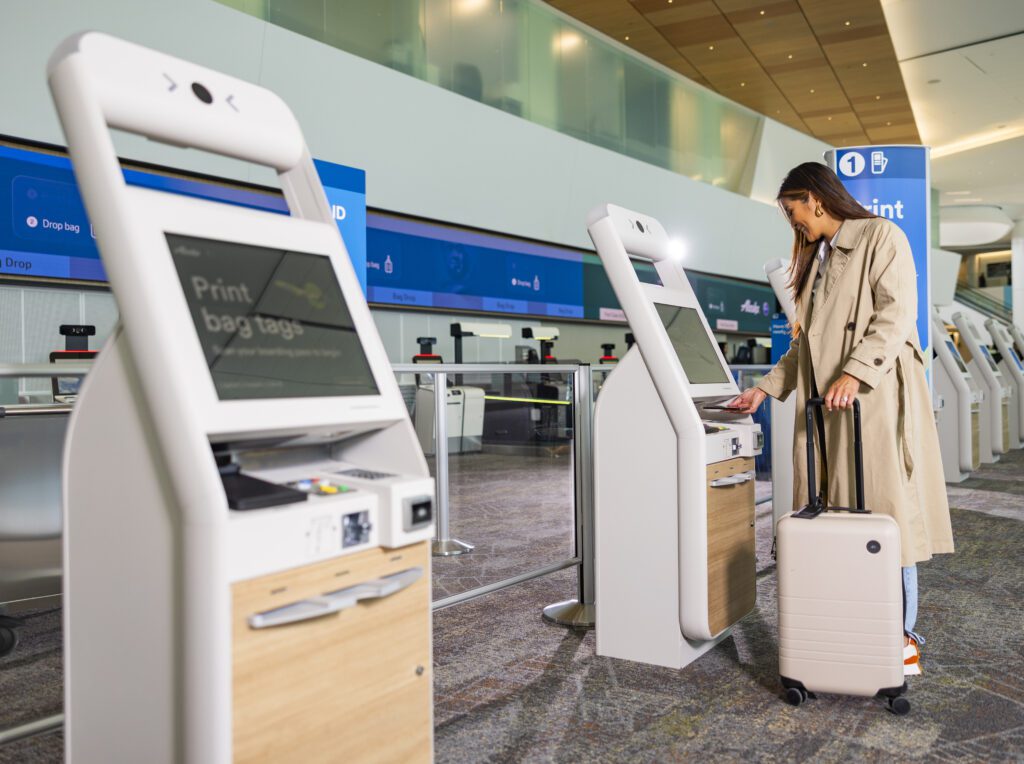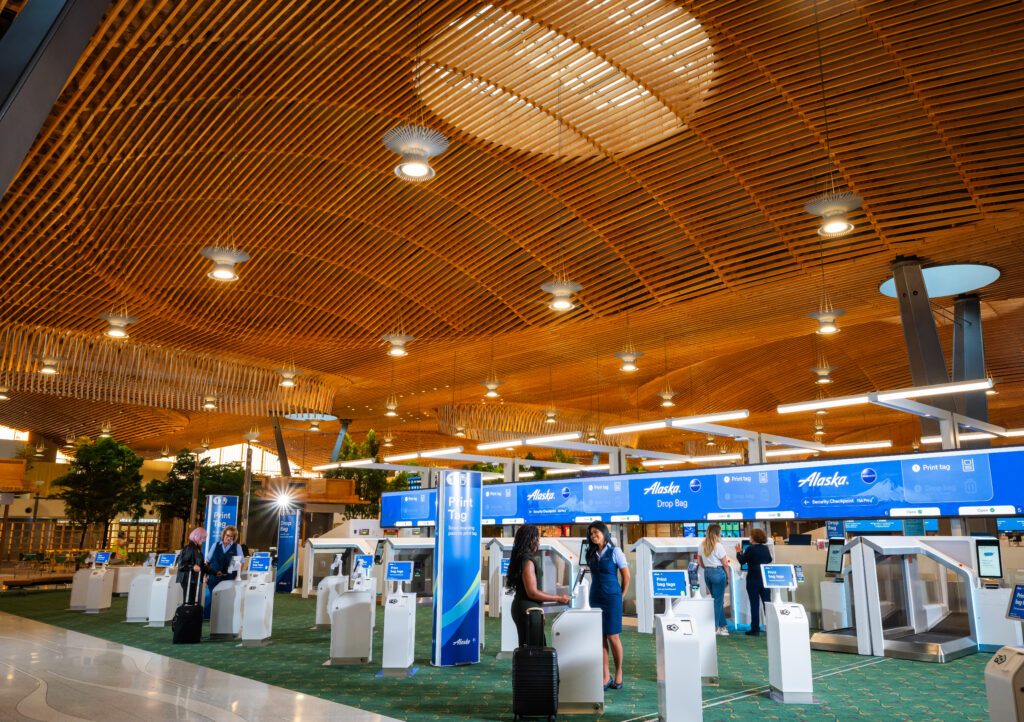Airports all over the U.S. (and the world) are investing tens of billions of dollars to modernize and expand.
It’s all meant to ease congestion and reduce wait times as air travel continues to grow.
The International Air Transport Association expects 7.8 billion air travel trips annually by 2040, double what it was before the pandemic — a major driver for airport expansions and modernization.
Airports are the top sector of the travel industry with plans to increase their tech investments 17% this year, as outlined by Skift’s 2024 State of Travel report. Overall, 91% of travel companies have planned “moderate to aggressive” tech investments this year, according to survey data from Amadeus.

One of the top tech upgrades for airports is security checkpoints. Many are adding tech for biometrics and upgrading tech for screening carry-on bags and passengers.
Another top investment is for checked baggage drop-off and handling — an area that airports and airlines historically have neglected, which can lead to nightmare scenarios for passengers.
Below are highlights of five U.S. airports working on major renovation and modernization projects.
John F. Kennedy International Airport
The John F. Kennedy International Airport (JFK) shared updated plans earlier this year on a $4.2 billion project to construct a new terminal 6.
The 1.2 million-square-foot facility will take the place of the former terminal 6 and terminal 7, with plans for 10 gates and modern technology. The first five gates are expected to open in 2026, and the project is planned for completion by 2028.
Modern tech includes self check-in and bag drop, streamlined security operations, baggage claim, and customs tech. The airport said it will also offer digital concierge services.
The terminal 6 construction is part of a $19 billion project that includes a new terminal 1 and an expanded terminal 4.
At 2.6 million square feet, the new terminal 1 would be more than twice the size of terminals 1 and 2. There will be 23 gates, and the first of them are expected to open in 2026. Among plans for modern tech throughout, the facility will include a new baggage handling system, the airport said.
San Francisco International Airport
The San Francisco International Airport (SFO) this month began working on a $2.6 billion project to modernize terminal 3, which primarily is used for domestic flights.
The project renovates 650,000 square feet and adds 200,000 square feet on the western half of the terminal, which is expected to open in fall 2027. It includes automated bag drop stations, new security checkpoints, and more.
The project also includes a new six-story building for airline lounges and operational offices, expected to open in early 2028. A renovated check-in lobby on the eastern end of terminal 3 is expected to open in early 2029.
SFO recently completed a $2.4 billion redevelopment project of terminal 1, which includes automated security checkpoints, exit lanes, and baggage handling.
With that renovation, Alaska Airlines became the first airline at SFO to have automated bag drop stations, part of the airline’s $2.5 billion investment to upgrade passenger technology in airport lobbies. Passengers can scan their boarding passes at bag tag stations to print their tags, and then the bag drop stations scan the tags and accept the luggage. Alaska also installed more seating with power outlets for charging devices.

Portland International Airport
The Portland International Airport (PDX) is in the middle of a $2.2 billion renovation project to upgrade its main terminal.
PDX this month opened the first phase of its main terminal, which includes new check-in areas, streamlined security, and a new public space with stadium seating and a mezzanine restaurant. The airport also installed a ground pump for heating and cooling, which it says will cut the use of fossil fuels by 95%.
The second phase, a renovation of the north and south ends of the terminal, is expected to be finished in early 2026. It will include automated exit lanes, new airline lounges, and more restaurants and shops.
The upgraded security screening technology allows passengers to keep everything inside of their bags. Other tech allows agents to view digital 3-D images of a bag’s contents, and a new passenger screening system allows passengers to keep their arms at their sides instead of holding them in the air.
Alaska Airlines has added automated bag tag and bag drop stations, part of the airline’s $2.5 billion investment to upgrade passenger technology in airport lobbies. The upgrade includes biometrics tech for identifying passengers without the need to wait in line for a human agent.
The airline said that nearly 90% of passengers now check in before arriving at the airport. Once that’s done, passengers can scan their boarding passes at the bag tag stations to automatically print their tags. The bag drop stations then scan those tags and accept the luggage.

Source: Alaska Airlines
San Antonio International Airport
The San Antonio International Airport will soon begin a $2.5 billion expansion project meant to double its capacity, with plans for completion by 2028. It’s the city’s largest capital project ever.
The project includes up to 17 domestic and international gates and over 850,000 square feet of new terminal space, along with new space for concessions and lounges.
The new terminal has been designed with advanced tech for security systems and passenger areas, the airport said. That includes a modern area for federal inspections, allowing the airport to expand international service.

Pittsburgh International Airport
Pittsburgh International Airport (PIT) is building a new 811,000-square-foot terminal, a $1.4 billion project expected to be finished in 2025.
The airport says the new terminal was designed as a “tech-forward,” more efficient, and sustainable facility. It was designed to reduce time from the curb to the gate by 50%.
The new facility will include more streamlined ticketing stations, security checkpoints, and baggage claim systems, along with a more friendly wayfinding design, garden terraces, and more dining and shopping options.


